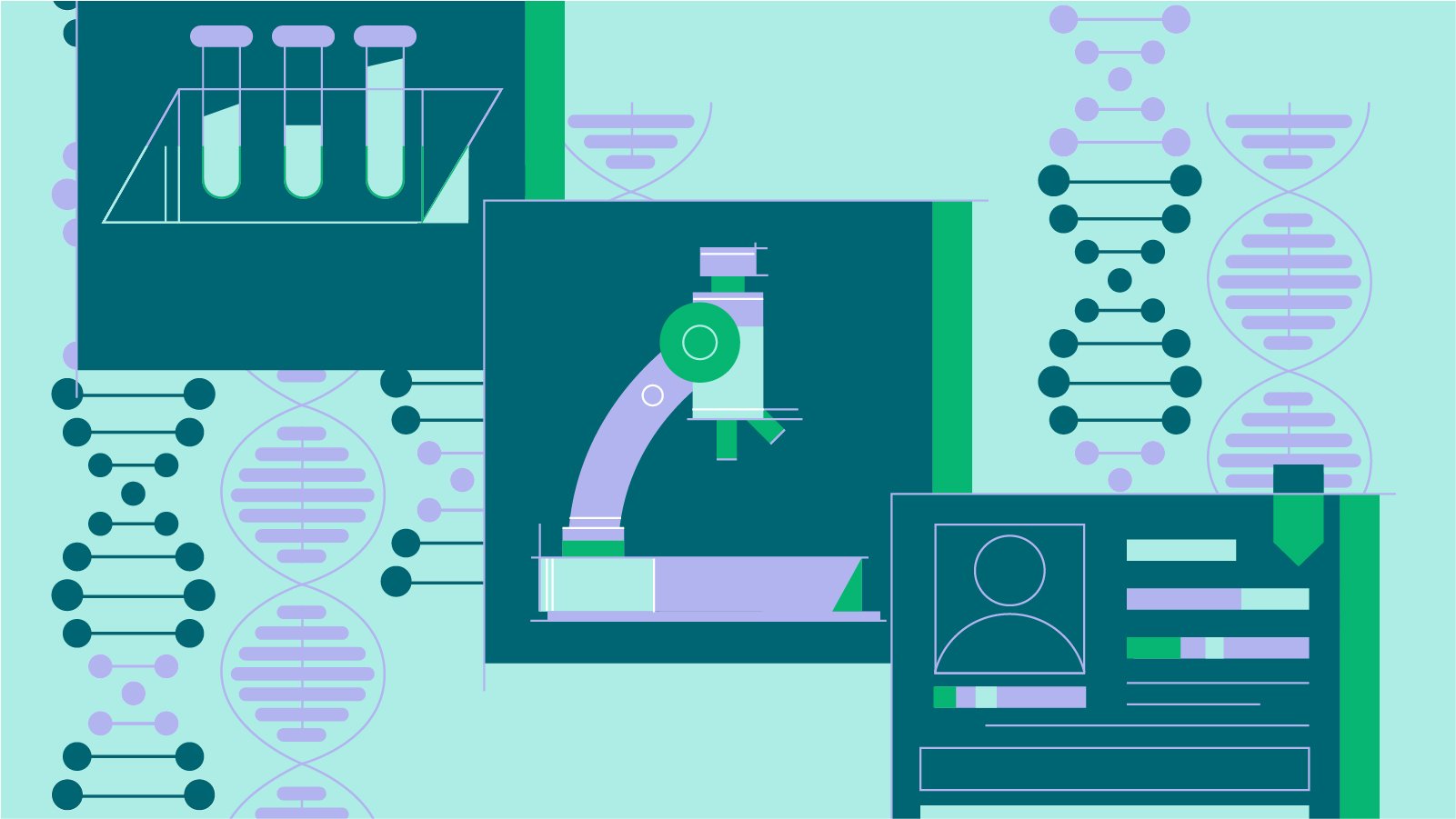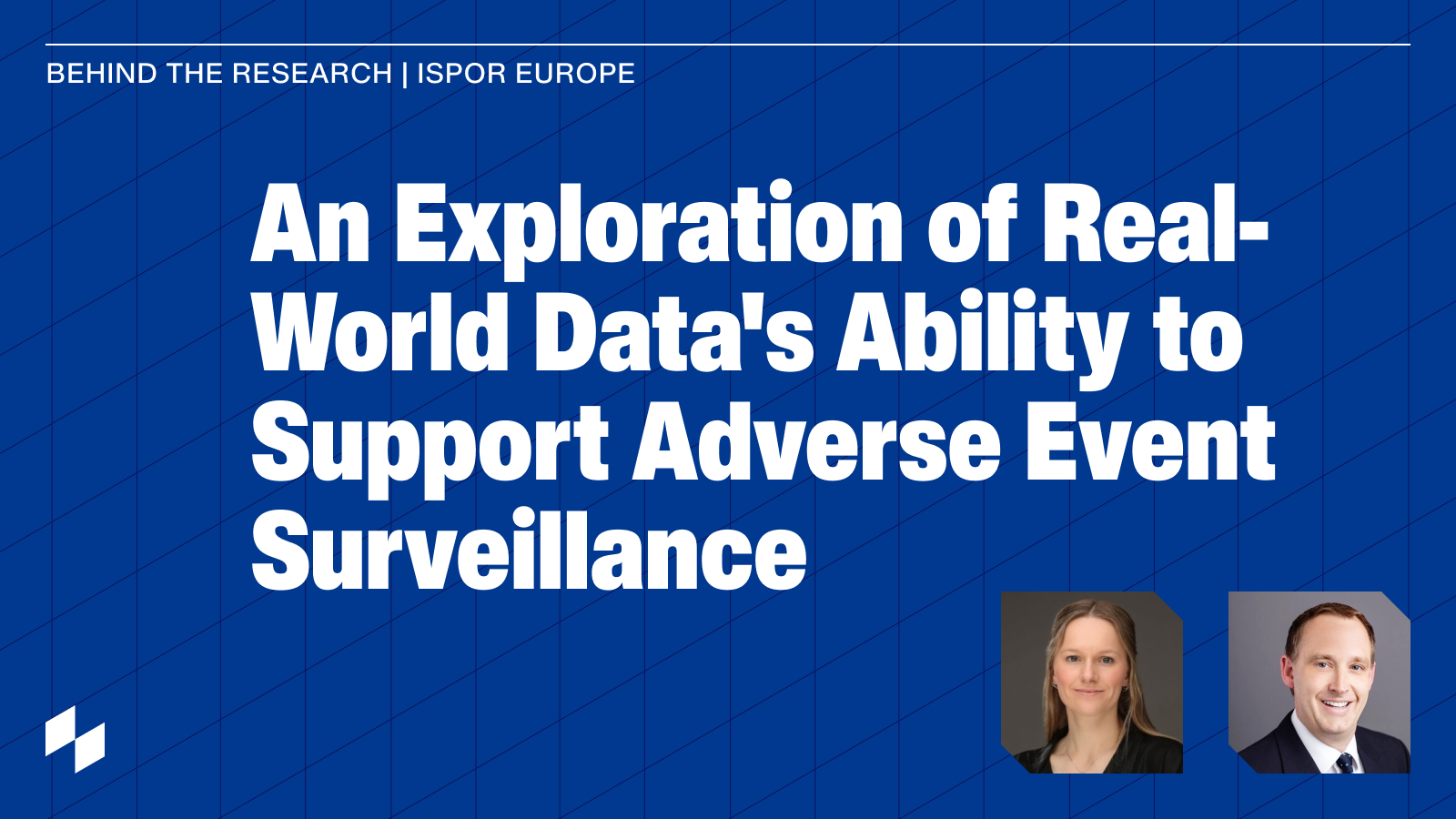Earlier this year, I had a chance to attend the 2025 ASCO Genitourinary (GU) Cancers Symposium in San Francisco and witness remarkable advancements across the spectrum of GU malignancies, many with direct impact on how we care for people with cancer. At the Symposium, Flatiron Health had the opportunity to showcase a number of studies that used our real-world evidence (RWE) solutions to answer important research questions for the GU oncology community, and I had the pleasure of moderating a webinar a few weeks ago with the principal authors of three of those studies to discuss their findings and immediate implications.
The webinar was recorded and is here for you to watch in its entirety.
It features:
- A presentation by Dr. Umang Swami, MD, MS, assistant professor of oncology at the Huntsman Cancer Institute at the University of Utah in Salt Lake City on treatment patterns and attrition rates in patients with metastatic castration-resistant prostate cancer
- A presentation by Dr. Amanda Nizam, MD, associate staff at the department of hematology and medical oncology at the Cleveland Clinic Taussig Cancer Institute on the real-world safety of first-line therapies for locally advanced or metastatic urothelial carcinoma
- A presentation by Dr. Neeraj Agarwal, MD, FASCO, professor of medicine, director of the GU Oncology Program at the Huntsman Cancer Institute, and editor-in-chief of ASCO Daily News, on the need to meet current germline and somatic tissue testing guidelines for patients with metastatic prostate cancer
Here’s a quick introduction to the research they presented during our webinar.
Case study #1
Treatment patterns and attrition rates in patients with metastatic castration-resistant prostate cancer (mCRPC)
The treatment landscape for patients with mCRPC has recently evolved with the approval of lutetium-177 and PARP inhibitors (either as single agents or in combination with an androgen receptor pathway inhibitor (ARPI) in the mCRPC setting. Additionally, docetaxel and ARPIs, which have been well-established in the management of mCRPC, are now approved for use earlier in the disease course for patients with metastatic hormone sensitive prostate cancer (mHSPC). Despite the advent of novel therapeutic options, the overall prognosis of patients with mCRPC remains poor.
Dr. Swami and his team examined treatment patterns and outcomes of patients with mCRPC by conducting a retrospective observational cohort study using the Flatiron Health nationwide database. 12,333 patients diagnosed with mCRPC were identified across 280 cancer clinics and 800 sites, primarily in the community setting, between 2013 and mid-2024. The study found a substantial drop-off in the number of patients receiving a subsequent line of therapy, with 39% of patients with mCRPC not receiving second-line treatment and 65% not receiving a third-line regimen. Dr. Swami and co-authors also observed that ARPIs and taxanes remain the most frequently used treatments across most lines of therapy in the mCRPC setting. While this treatment pattern is beginning to shift, the change has been slow
The key takeaways are clear: there is an urgent need to address barriers that prevent patients from accessing subsequent lines of therapy, and do optimize treatment sequencing in clinical practice.
Case study #2
Real-world safety of first-line therapies for locally advanced or metastatic urothelial carcinoma (la/mUC)
In just the last two years, the approval of first-line combination regimens, such as enfortumab vedotin plus pembrolizumab and gemcitabine-cisplatin plus nivolumab, has significantly transformed the treatment landscape for advanced urothelial carcinoma. While randomized clinical trials have reported differences in safety profiles across first-line regimens, real-world data on treatment- emergent adverse events (rwTEAEs) remains limited.
Dr. Nizam and her co-authors addressed this evidence gap using the Flatiron Health nationwide EHR-derived database. They conducted a retrospective observational cohort study of patients diagnosed with la/mUC who initiated first-line treatment with one of six regimens of interest between Jan 2016 and October 2023. A total of 5,235 patients qualified for the study, and the team applied machine learning to extract mentions of 30 predefined rwTEAEs, such as fatigue, nausea, or anemia from clinicians’ documentation.
The most common rwTEAEs in the overall cohort were fatigue (64%), anemia (43%), loss of appetite (43%), and nausea (42%). However, after adjusting for time on treatment, the relative rates of some rwTEAEs differed substantially from overall incidences. For instance, patients treated with ICI monotherapy and patients treated with a regimen of cisplatin-based chemo without avelumab experienced the same incidence of weight loss (33%), but when adjusted for time on treatment, the ICI monotherapy cohort showed a weight loss rate of 53 per 1,000 person-months on treatment for the ICI cohort compared to 84 for the cisplatin-based cohort.
The key takeaway from this study is that, while the rwTEAEs incidence rates generally aligned closely with the safety profiles reported in FDA approvals, time-adjusted rates revealed notable differences across regimens. This underscores the importance of accounting for time on treatment when interpreting real-world adverse event data, particularly when evaluating associations between adverse events and clinical outcomes.
Case study #3
The need to address gaps to meet current germline and somatic tissue testing guidelines for patients with metastatic prostate cancer (mPC)
Dr. Agarwal highlighted recent studies led by the Huntsman Cancer Institute to underscore persistent challenges in the uptake and timing of Next-Generation Sequencing (NGS) testing for patients with mPC.
The first study examined trends and disparities in NGS testing among patients with mPC and mUC using the Flatiron Health EHR-derived database. Among 11,927 patients diagnosed with mPC between 2015 and 2022, the proportion who received NGS testing prior to first-line treatment increased from 19% in 2015 to 36% in 2020 then declined to 27% in 2022, resulting in an overall rate of 29.3%. The median time from metastatic diagnosis to NGS testing was 13.2 months. Black and Hispanic patients, as well as those with low socio-economic status or public insurance (e.g., Medicare) were even less likely to undergo testing before first-line treatment.
The second study cited by Dr. Agarwal, also presented at this year’s ASCO GU Symposium, used the Flatiron Health database to examine NGS testing patterns among patients with mPC who underwent NGS testing between 2015 and 2024. It found that 13.5% of patients who underwent testing had their first test result within three months of their death while 1.1% had their first test result after their death–Dr. Agarwal calls this type of late testing ‘desperation testing.’
NGS is a powerful tool that enables clinicians to detect actionable alterations-such as HRR alterations (inclusive of BRCA), SPOP, PTEN and others-linked to significantly improved survival when detected early and treated appropriately. Yet, the majority of patients with mPC still don’t undergo testing. As Dr. Agarwal stated: “In the USA, one of the wealthiest countries in the world, we cannot have only 29% of our mPC patients undergo germline or genomic testing. This is unacceptable. We should be testing 100% of these patients, and we should be testing them early.” Dr. Agarwal and his team are putting that principle into practice. At his clinic, NGS testing is embedded into the initial patient intake process. For any new diagnosis of mPC or locally advanced prostate cancer, the nursing staff is empowered to immediately order NGS testing, saving critical time when it matters the most.
RWE is key to filling critical evidence gaps in GU and other oncology research
All of the studies presented during the webinar shared one thing in common: each relied on Flatiron’s representative, nationwide, EHR-derived and de-identified database to address critical evidence gaps in GU oncology.
“The Flatiron data comes directly from the EHR, so there’s really no recall or selection bias,” noted Dr. Agarwal during the webinar. “We love working with it because it’s one of the most solid patient-level data sources out there.”
At Flatiron, we’re incredibly proud that our real-world data is helping to drive impactful research. We recently celebrated a major milestone-more than 1,500 publications across nearly 150 peer-reviewed journals have now used Flatiron RWE to support their research. With this milestone, we’re more motivated than ever to deliver high quality RWE at scale to support groundbreaking research across the therapeutic development lifecycle. We’re also leveraging LLMs (fine-tuned with high-quality, expert-labeled data) to accelerate and enhance our data extraction capabilities. By linking clinical, genomic, and molecular datasets, we are unlocking deeper insights into biomarker prevalence, treatment patterns, and patient outcomes. I’m excited to see what new breakthroughs our Evidence Solutions will enable.
I want to extend a sincere thank you to our esteemed panelists for sharing their expertise. Be sure to watch the full recording to learn more from them, including how they’re applying their new findings and what future research excites them the most.
Interested in learning more about how Flatiron’s best-in-class RWE can support your research priorities? Get in touch with us.



